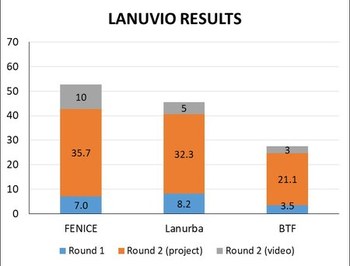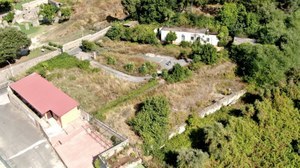
The Scientific committee has now completed evaluation of the second submission. The experts involved in the evaluation were the following:
Projects (up to 50 points):
Alberto Custodi (University of Bologna, Italy), Francesco Orsini (University of Bologna, Italy), Chiara Cirillo (University of Naples Federico II, Italy), Mohsen Aboulnaga (University of Cairo, Egypt), Songul Sever Mutlu (Akdeniz Üniversitesi, Turkey), Noémi Kappel (SZIU Faculty of Horticultural Science, Hungary), Luca Parma (University of Bologna, Italy), Antonella Samoggia (University of Bologna, Italy), Alessandra Bonoli (University of Bologna, Italy), Vivian Loges (Universidade Federal Rural de Pernambuco – UFRPE, Brazil), Gabriele Baroni (University of Bologna, Italy), Matteo Vittuari (University of Bologna, Italy), Aldo Bertazzoli (University of Bologna, Italy), Xavier Gabarrell Durany (Universitat Autonoma de Barcelona, Spain), Jesus Ochoa (Universidad Politècnica de Cartagena, Spain), Leo Marcelis (Wageningen University, The Netherland), Remi Kahane (CIRAD; France), Anna Lenzi (University of Florence, Italy), Emmanuel Geoffriau (Agrocampus Ouest, France), Francesca Meneghello (San Camillo Hospital, Italy), Gerhardus Griesel (Cape Peninsula University of Technology, South Africa), Bernd Polling (South Westfalia University of Applied Sciences, Germany), Costantina Righetto (University of Bologna, Italy), Isabella Righini (Wageningen University, The Netherland), Joan Rieradevall (Universitat Autonoma de Barcelona, Spain), Johan van Rooyen (Cape Peninsula University of Technology, South Africa), Jorg Schroder (Universität Duisburg-Essen, Germany), Juan Fernàndez (Universidad Politècnica de Cartagena, Spain), Valda Rondelli (University of Bologna, Italy), Cherubino Leonardi (University of Catania, Italy), Maria del Carmen Salas (University of Almeria, Spain).
Video (up to 10 points):
Michele Mellara (University of Bologna, Italy), Alessandro Rossi (University of Bologna, Italy).
Ranking of LANUVIO projects:

The former station ARES 118 (Regional Agency for Health Emergency) is located within the city center of Lanuvio (Rome), in an area where there are archaeological finds from the Roman era (remains of the sanctuary Giunone Sospita). In particular, excavations affect the area immediately on the north side, with the presence of remains of the ancient shrine. Here's detailed informations about archaeological sites and Comune di Lanuvio
On the west side, there is a large green area, Villa Sforza Cesarini, with a large park, Roman remains, included a restored arched structure, different services (municipal library, chill out room for listening to music, Hall of Columns for events). The area is located about 800 meters from the main square of the City of Lanuvio and the connections with public transport.
In the past, the area and the building have had different destinations: first, they were used as a day center for disabled adults, and then they became the location for the ARES 118.
In a project presented a few years ago, which was not financed, it was assumed that it would be used as an urban garden. Alternatively, the idea was launched to realize a place of welcome for youth tourism, with the possibility of offering training for the use of 3D printers and photography courses with drones. The municipal council has also decided to set the rooms on the ground floor of the former school "M. Colonna" as offices of the Local Police force.
Today the space is completely unused.
As far as the architectural-urbanistic description is concerned, the building certainly needs internal and external maintenance, the roof and all the installations have to be rebuilt. It should be noted that there is also, obviously to be renovated, a roof structure that has been used to shelter the vehicles, in particular the ambulances of the 118 service.
As far as the citizens' thoughts are concerned, we do not have any reliable data on the matter, in the sense that the future of the area has not been the subject of public debate; however, requests have been received from private individuals to use it for the creation of small gardens (so-called active gardens).
It should be noted that the entire area has a masonry fence, closed with an iron gate.
You can find more information on design in the links below: